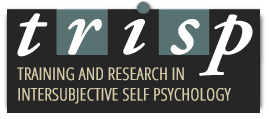My workshop “The Creative Couple: Enhancing the Creative Potential of Self Psychological Therapy” highlights the intersubjective engagement of analyst and patient, which leads to creative change. Psychoanalytic therapy in my view is an art form, similar to painting, composing, choreography, etc. Much of past psychoanalytic thinking about art is western-centered and limited by a romantic notion of the artistic hero, working in isolation and wresting artistic imagery from the unconscious – or some derivative of that myth. In my workshop I will argue that the essence of art is its psychological nature, especially its embeddedness in intersubjective processes. Art “is” not a thing, an activity or a cultural institution, it is a fundamental way we engage with the world and each other, and in particular how we engage with and affect our own subjectivity, in all three of its dimensions: cultural, relational and personal. Through art human subjectivity becomes objectified, perfected and re-internalized in an unending process of psychological refinement. It is a protean flux of refinement, disruption and continual change, which reflects the nature of our social experience, our relationships with others and our own inner sense of self. Art has no fixed goal and no standard formal structure; but it is one of the primary ways we discover who we are, and through which we create and elaborate our subjective lives.
This view of art maps quite well onto recent models of psychoanalytic practice. In particular the ideas of intersubjective self psychology, neuropsychological research, infant research and complexity. So with this rich set of psychoanalytic ideas in the background my workshop explores how the complex interaction of therapist and patient involves the creation of a relationship, which is constructed in the psychological space between. Like an artwork this relationship has aesthetic form, complexity and quality. The work of analysis involves both the elaboration of the relationship and the shared work of giving meaning and articulating the self and self-in-relation, in new, surprising forms. The practical use of this understanding will be illustrated with an in-depth case example. Bernice Belth will discuss the ideas presented and I look forward to sharing it all with those who attend. I hope to see you there!
George Hagman

 Find Us on Facebook
Find Us on Facebook
Hi George and Bernice,
I am looking forward to your workshop on the Creative Couple of patient and therapist, seen from the perspective of Intersubjective Self Psychology. When our work is going well, we have this feeling that we are creating something new with our patient, something that neither we nor our patient knew beforehand. These are exhilarating moments in treatment that transcend and transform the experience of feeling mired in the old, uncreative and repetitive. At such times we both, therapist and patient, can feel like artists. To learn that we can facilitate this process by comparing and contrasting it with the artistic process is exciting and hopeful.